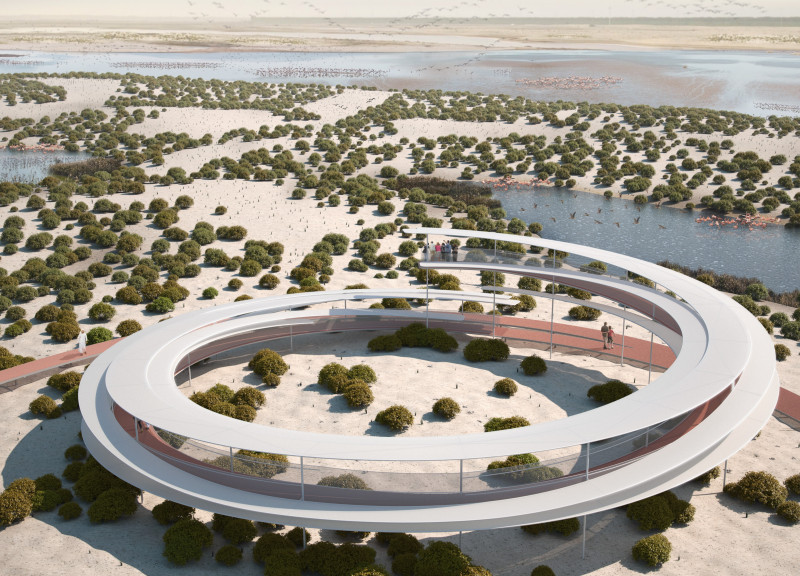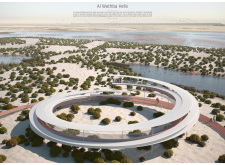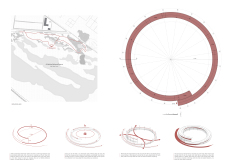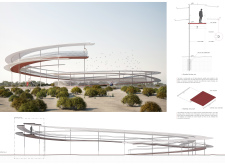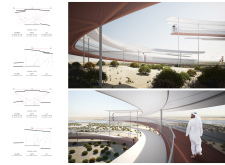5 key facts about this project
The helix structure offers a unique visual and spatial experience, promoting exploration and providing diverse viewpoints of the wetlands. The continuous spiral allows for a gradual ascent, enabling visitors to engage with the landscape from various elevations. This design choice enhances interaction with nature, offering both panoramic views and intimate wildlife observations.
Unique Design Approaches
What sets the Al Wathba Helix apart from conventional observation towers is its embodiment of ecological sensitivity in design. The structure employs a helical pathway that combines aesthetic appeal with purposeful navigation. Observation areas are seamlessly integrated along the pathway, ensuring that movement through the structure is fluid and unbroken.
The choice of materials emphasizes a commitment to durability and environmental harmony. The primary framework utilizes galvanized steel, which is both resilient and lightweight, minimizing visual disruption. Perforated metal panels are strategically placed to provide shade and enhance airflow while maintaining visibility. This design consideration reduces heat while offering shelter, demonstrating an understanding of local climatic conditions.
Additionally, the use of PTFE fabric membrane in certain areas enhances the structure's lightweight nature, providing effective weather protection. The incorporation of native landscaping reinforces ecological integrity while promoting biodiversity within the reserve.
Accessibility is another critical focus of the design. The pathway is designed to be universally accessible, allowing all visitors, including those with mobility challenges, to experience the observation area. This commitment to inclusivity ensures that the project serves a wider audience while fostering a greater appreciation for the environment.
Sustainable Integration with Environment
Overall, the Al Wathba Helix exemplifies architectural design that prioritizes ecological and social values. By carefully considering the relationship between human activity and natural ecosystems, the project promotes awareness and education about the importance of wetlands. Its thoughtful design choices facilitate an immersive experience without encroaching on the habitat.
For those interested in a deeper understanding of the project’s architectural elements, including architectural plans and sections, further exploration of the Al Wathba Helix presentation is encouraged. Detailed insights into the architectural designs and ideas that shaped this project can provide extensive knowledge on its innovative approach to combining architecture with environmental stewardship.


